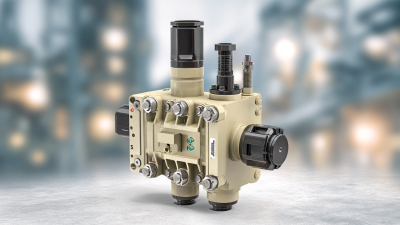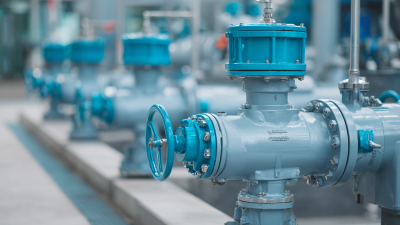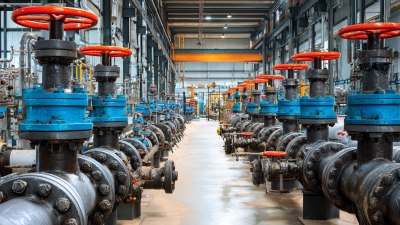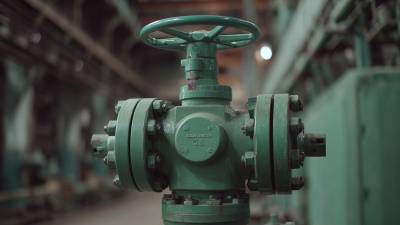In today's industrial landscape, the choice of the right components can significantly impact operational efficiency and system reliability. Among these components, the air actuated ball valve has emerged as a crucial element in various processes, from chemical manufacturing to water treatment. According to a recent report from MarketsandMarkets, the global ball valve market is projected to reach $15.4 billion by 2026, growing at a CAGR of 4.2%. This growth is driven by the increasing demand for automation and the need for precise control in fluid management. As industries expand and evolve, understanding the distinct types of air actuated ball valves and their applications becomes imperative for engineers and procurement professionals. This guide aims to provide essential insights into selecting the right air actuated ball valve tailored to specific industrial needs, ensuring both optimal performance and cost-effectiveness.

When selecting the ideal air actuated ball valve for industrial applications, understanding key features is paramount. Air actuated ball valves are renowned for their rapid response times and reliability. One essential feature to consider is the valve’s actuator type, which can significantly impact performance. There are two main actuator configurations: single-acting and double-acting.
Single-acting actuators use a spring return mechanism, making them ideal for fail-safe operations, while double-acting actuators offer more control and quicker actuation, suitable for high-throughput environments.
Another critical aspect is the construction materials of the valve body and ball. Depending on the application’s operational environment, corrosion resistance and temperature tolerance can dictate the longevity and reliability of the valve. Common materials include stainless steel, which provides excellent resistance to rust and high temperatures, and PVC, which is more suited for chemical applications.
Furthermore, it's essential to evaluate the valve's size and flow capacity to ensure optimal performance in your specific industrial setting. By prioritizing these features, industries can significantly enhance efficiency and safety in their processes.
When selecting the right air actuated ball valve for your industrial applications, understanding the differences between pneumatic and electric actuation methods is crucial.
Pneumatic ball valves are often favored for their rapid response times and high reliability in high-speed operations. They utilize compressed air to quickly open and close the valve, making them ideal for systems requiring frequent adjustments. Their simplicity in design means they are generally easy to maintain, and they can perform well in hazardous environments where electrical components might pose risks.
On the other hand, electric ball valves offer precise control and can easily integrate into automated systems equipped with advanced monitoring and feedback mechanisms. With electric actuation, adjustments can be made with pinpoint accuracy, making them suitable for applications that demand high precision, such as in chemical processing or food production.
While they may require a more substantial initial investment and periodic maintenance of electrical components, the reduced energy consumption and environmental adaptability can justify their use in the long run.
Ultimately, the choice between pneumatic and electric ball valves depends on specific operational demands, environmental conditions, and budget considerations.
When selecting an air actuated ball valve for industrial applications, one of the most critical considerations is material selection. The choice of material directly influences the valve's durability and its compatibility with the fluids it will handle, especially in harsh conditions. According to a report by the International Corrosion Council, approximately 30% of all industrial downtime is attributable to equipment failure due to corrosion and wear caused by unsuitable materials. Therefore, opting for high-quality materials like stainless steel or specialized alloys can significantly enhance the longevity of ball valves.
Moreover, the compatibility of valve materials with specific chemicals is paramount. The Chemical Manufacturers Association indicates that improper material selection can lead to catastrophic failures, especially in industries dealing with corrosive substances. For instance, PTFE (Teflon), commonly used for seat and seal materials, offers excellent resistance against a wide range of chemicals, making it invaluable in the chemical processing sector. Additionally, choosing valves that comply with industry standards, such as ASTM or API specifications, can provide reassurance that the materials can withstand operational stresses and environmental challenges, thus ensuring optimal performance and safety.
| Material | Temperature Range (°C) | Pressure Rating (bar) | Compatibility with Fluids | Typical Applications |
|---|---|---|---|---|
| Stainless Steel | -196 to 400 | 10-30 | Water, Oil, Gas | Chemical Processing, Oil & Gas |
| Brass | -40 to 180 | 10-16 | Water, Air | Heating Systems, Plumbing |
| Plastic (PVC) | 0 to 60 | 6-10 | Water, Chemicals | Water Treatment, Waste Management |
| Hastelloy | -100 to 425 | 20-40 | Acids, Solvents | Pharmaceuticals, Aerospace |
When selecting an air actuated ball valve for industrial applications, understanding the performance specifications, particularly pressure ratings and flow coefficients, is crucial. Pressure ratings indicate the maximum pressure a valve can handle, which is essential for ensuring safety and functionality in high-pressure systems. According to industry reports, most standard ball valves operate effectively at pressures up to 600 psi, while specialized designs can manage pressures exceeding 1500 psi, ensuring they meet the demanding requirements of various industrial processes.
Flow coefficients (Cv) provide insight into the valve's flow capacity, affecting system efficiency. A higher Cv value indicates greater flow capability, which is vital for applications requiring rapid fluid transfer. For instance, a ball valve with a Cv rating of 20 can pass approximately 20 gallons of water per minute with a pressure drop of 1 psi. Choosing a valve with an appropriate Cv rating can optimize system performance and prevent excessive energy consumption or potential damage. Therefore, evaluating these specifications is fundamental in achieving operational excellence and reliability within any industrial setting.
When it comes to maintaining air actuated ball valves in industrial applications, understanding maintenance considerations is crucial for maximizing their longevity and efficiency. Regular inspections and servicing can help identify potential issues before they escalate into costly failures. One essential aspect of maintenance involves checking the actuator for proper functionality. This includes ensuring that the air supply is clean, at the correct pressure, and free from contaminants that can affect performance. Additionally, the valve seat and seals should be inspected regularly for signs of wear or damage, as these components play a vital role in preventing leaks and ensuring smooth operation.
Another key maintenance practice is lubrication. Proper lubrication of moving parts not only reduces friction but also prevents premature wear and tear. Using the correct type of lubricant is critical; it should be compatible with the materials of the valve and the specific operating conditions. Furthermore, keeping a detailed maintenance log can assist in tracking the valve's performance over time and help schedule preventative maintenance effectively. By prioritizing these maintenance considerations, industries can enhance the durability and functionality of their air actuated ball valves, ultimately ensuring a more reliable operation in their systems.




